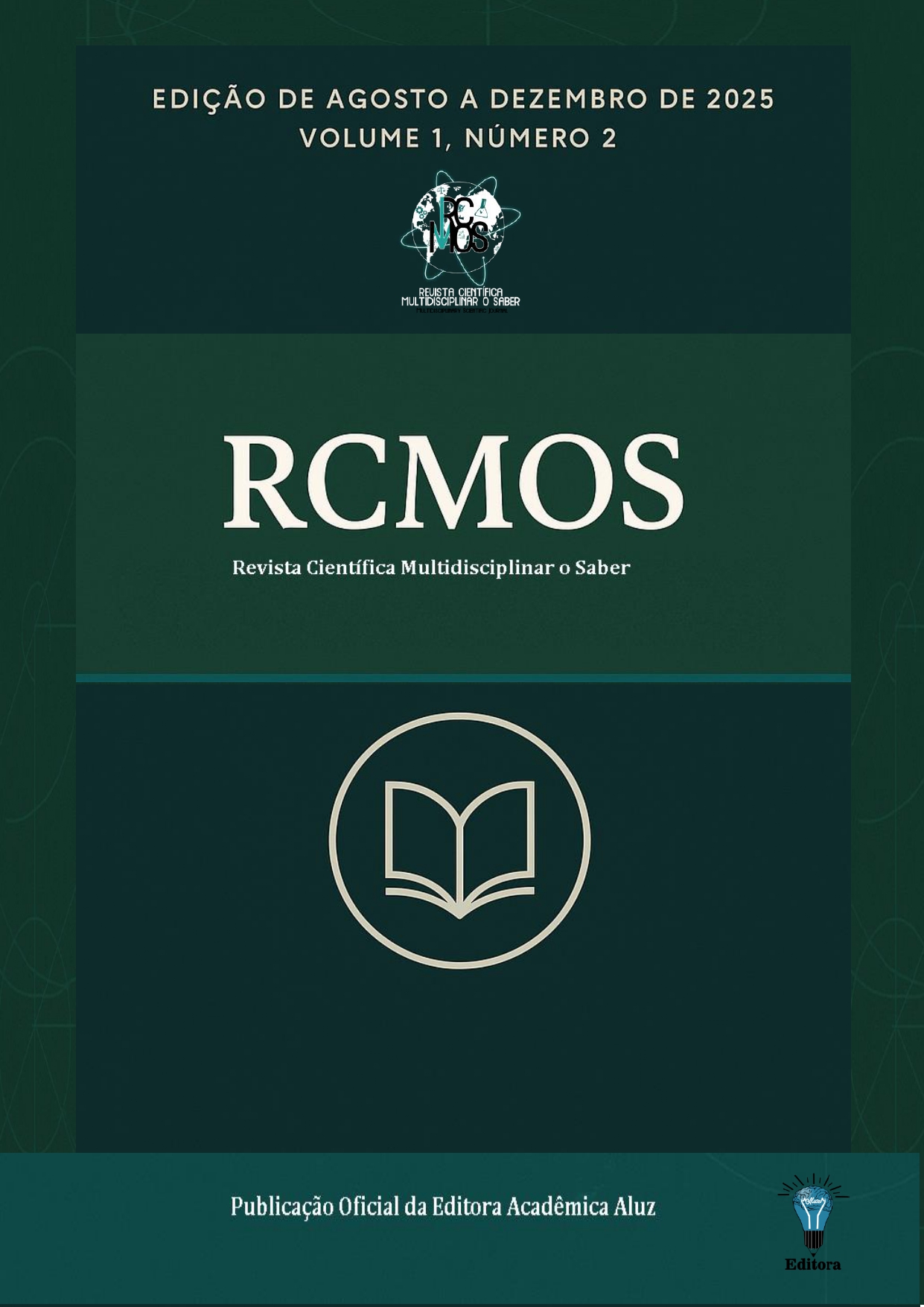Angular kinematics of the overhead squat and shoulder pain: a correlational analysis in crossfit® athletes
Angular kinematics of the overhead squat and shoulder pain: a correlational analysis in crossfit® athletes
DOI:
https://doi.org/10.51473/rcmos.v1i2.2025.1575Keywords:
CrossFit®; Shoulder pain; Angular kinematics; Overhead squat; Sports injuries.Abstract
CrossFit® is a physical training method that combines resistance, aerobics, mobility, flexibility, and power exercises. Although it promotes significant gains in strength and performance, the practice is also associated with a high incidence of injuries, particularly in the shoulder, knee, and ankle regions. Therefore, this study aimed to analyze the correlation between the angular kinematics of the spine, hip, and ankle joints—considering flexion and extension angles in the sagittal plane—during the overhead squat movement and the level of shoulder pain in CrossFit® athletes. Ten volunteers of both sexes, aged over 18 years, who had been practicing CrossFit® for at least six months and reported shoulder pain during the overhead squat, participated in this study. Data collection was carried out in CrossFit® gyms in Bauru, São Paulo, using specific software and a camera positioned in the sagittal plane, three meters from the participant. The movements were recorded at a frequency of 100 Hz during five repetitions of the exercise. The maximum flexion and extension angles of the spine, hip, and ankle joints were analyzed. Pain intensity was assessed using the Visual Analog Scale (VAS), and the correlation between kinematic data and VAS scores was evaluated using Pearson’s correlation test, with a significance level of p < 0.05. The results indicated a correlation between shoulder pain intensity and the angular kinematics of the analyzed joints, suggesting that changes in movement patterns may be related to shoulder pain in CrossFit® practitioners.
Downloads
References
BOLSANELLO, D. P. Pilates é um método de educação somática? Revista Brasileira de Estudos da Presença, v. 5, n. 1, p. 101–126, 2015.
BRUKNER, P.; KHAN, K. Clinical sports medicine. 2. ed. Sydney: McGraw-Hill, 2001.
CLARSEN, B., et al. Reduced glenohumeral rotation, external rotation weakness and scapular dyskinesis are risk factors for shoulder injuries among elite male handball players: a prospective cohort study. Br J Sports Med, 48(17), 1327–1333, 2014. Disponível em: http://dx.doi.org/10.1136/bjsports-2014-093702
. PMid: 24948083.
CROSSFIT BRASIL. Glossário. 2015. Disponível em: http://www.Crossfitbrasil.com.br/blog/glossario/
. Acesso em: 20 jul. 2015.
DOMINSKI, F. H., et al. O fenômeno CrossFit: análise sobre o número de boxes no Brasil e no mundo e modelo de treinamento e competição. Revista Brasileira de Prescrição e Fisiologia do Exercício, São Paulo, v. 13, n. 82, p. 271–281, mar./abr. 2019.
DOMINSKI, F. H., et al. Perfil de lesões em praticantes de CrossFit: revisão sistemática. Fisioterapia e Pesquisa, 25(2), 229–239, 2018. https://doi.org/10.1590/1809-2950/17014825022018
DAWSON, M. C. CrossFit: fitness cult or reinventive institution? International Review for the Sociology of Sport, v. 52, n. 3, p. 361–379, 2015.
FELTOSA, A. I. G. V. S., et al. Incidência de lesões no ombro em praticantes de musculação. RBPFEX-Revista Brasileira de Prescrição e Fisiologia do Exercício, v. 15, n. 96, p. 137–145, 2021.
GLASSMAN, G.; GLASSMAN, L. The CrossFit Training Guide: CrossFit Manual v4.2010. Disponível em: https://www.crossfit.com/cf-eminars/CertRefs/CF_Manual_v4.pdf
GUIA DE TREINAMENTO DE NÍVEL 1 DE CROSSFIT. CrossFit Journal, abr. 2007. Disponível em: https://library.crossfit.com/free/pdf/CFJ_L1_TG_Portuguese.pdf
KALIN, F. E. Nosotros hacemos CrossFit: etnografía sobre identidades deportivas. Educación Física y Ciencia, v. 19, n. 2, e030, 2017.
KAPANDJI, I. A fisiologia articular: Vol. 1. Ombro, cotovelo, prono-supinação, punho e mão. 6ª ed. Rio de Janeiro: Guanabara Koogan, 2007.
MANUAL DO CROSSFIT CFJ-L2. Portuguese Training Guide, 2012. Disponível em: https://www.crossfit.com
MONTALVO, A. M., et al. Retrospective injury epidemiology and risk factors for injury in CrossFit. Journal of Sports Science & Medicine, v. 16, n. 1, p. 53–59, 2017.
MOORE, K. L.; DALLEY II, A. F. Anatomia orientada para a clínica. 4. ed. Rio de Janeiro: Guanabara Koogan, 2001. p. 591–734.
RASCH, P. J.; BURKE, R. K. Cinesiologia e anatomia aplicada: a ciência do movimento humano. 5. ed. Rio de Janeiro: Guanabara Koogan, 1987. p. 171–209.
ROJO, J. R., et al. Corrida de rua: reflexões sobre o “universo” da modalidade. Corpoconsciência, 21(3), 82–96, 2017. Disponível em: https://periodicoscientificos.ufmt.br/ojs/index.php/corpoconsciencia/article/view/5090
SILVA, E. P., et al. Análise da amplitude de movimento associada à dor no ombro de atletas praticantes de CrossFit após protocolo de exercícios para o ombro: estudo clínico controlado. Brazilian Journal of Development, v. 8, n. 1, p. 5564–5578, 2022.
SOUSA, L. A., et al. A importância do trabalho fisioterapêutico preventivo nas lesões de ombro em praticantes de CrossFit. Braz. J. Health Rev., v. 3, n. 6, p. 16017–16028, 2020.
STONE, M. H., et al. Weightlifting: a brief overview. Strength and Conditioning Journal, 28(1), 50, 2006. https://doi.org/10.1519/1533-4295(2006)28[50:wabo]2.0.co;2
TEIXEIRA, R. V., et al. Incidência e localizações das lesões atribuídas à participação no treinamento funcional de alta intensidade. Rev Andal Med Deporte, 13(4), 210–215, 2020. Disponível em: https://pesquisa.bvsalud.org/portal/resource/pt/ibc-201289
TIRMAN, P. F. J., et al. MR arthrographic depiction of tears of the rotator cuff: benefit of abduction and external rotation of the arm. Radiology, 192, 851–856, 1994.
WAGENER, S., et al. CrossFit®: development, benefits and risks. Sports Orthopaedics and Traumatology, 36(3), 241–249, 2020.
Downloads
Published
Issue
Section
Categories
License
Copyright (c) 2025 Lara Retz dos Santos Prado , Nice Ribeiro Marques (Autor)

This work is licensed under a Creative Commons Attribution 4.0 International License.












